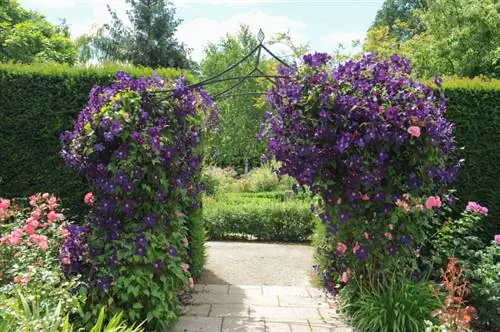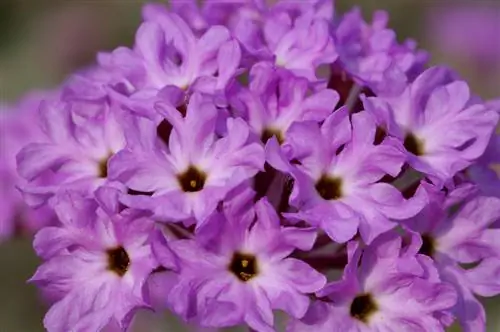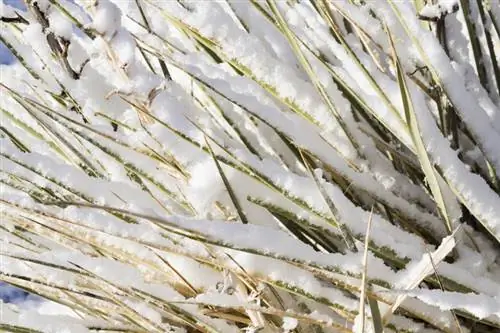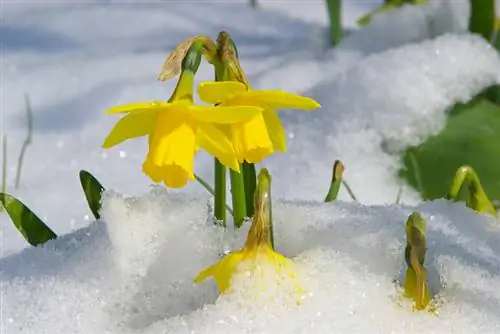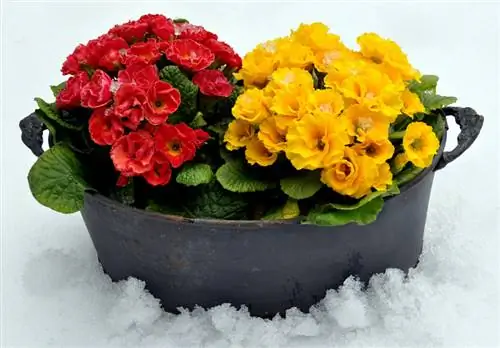- Author admin [email protected].
- Public 2023-12-16 16:46.
- Last modified 2025-01-23 11:20.
Among hobby gardeners there is sometimes uncertainty about the winter hardiness of clematis. In fact, the plant family contains winter-hardy, partially winter-resistant and frost-sensitive species. Find out the differences here.

Are clematis hardy or sensitive to frost?
Winter-hardy clematis include Clematis alpina, Clematis macropetala, Clematis orientalis and Clematis tangutica. Frost-sensitive species such as Clematis armandii, Clematis cirrhosa and Clematis forsteri require frost-free winter quarters. Winter protection is recommended for conditionally hardy varieties such as Clematis florida and Clematis montana.
These clematis are hardy
If you are looking for indestructible clematis with robust frost hardiness, these species and varieties are the focus of interest:
- Clematis alpina, the alpine clematis blooms from April and can withstand all sub-zero temperatures
- Clematis macropetala comes from the harsh climes of China and Mongolia and is correspondingly hardy
- All varieties that emerged from alpina and macropetala and are grouped together under the name ablated
- Clematis orientalis and tangutica, the yellow-flowering beauties cannot be affected by frost
However, early flowering is not considered a sign of complete winter hardiness. The ever-popular, early-flowering Clematis montana has proven to be extremely sensitive to sub-zero temperatures. In contrast, the fascinating, summer-flowering Italian clematis Clematis viticella scores with its exceptional resistance to frost.
These clematis want to go to winter quarters
Evergreen clematis are native to Australia, New Zealand, China and southern Europe, where the climate is very mild. The following species and varieties only survive a typical German winter in bright, frost-free winter quarters:
- Clematis armandii
- Clematis cirrhosa
- Clematis forsteri Cartmannii
- Clematis kweichowensi (semi-evergreen)
Winter protection is recommended here
A conditional winter hardiness implies that from temperatures of -8 degrees Celsius the clematis threatens to freeze. To prevent this shortcoming, the tendrils on the climbing aid are wrapped in jute or garden fleece. In addition, the tree disc should be piled up with leaves, straw and spruce needles. Among other things, the precautions for this clematis are:
- Clematis florida
- Clematis napaulensis
- Clematis montana
It is also advisable to protect a clematis in the pot from frost and snow. This also applies to species that are actually frost-resistant. Due to the exposed location, the root ball is much less protected in the planter than deep in the ground.
Tips & Tricks
Regardless of the winter hardiness of a clematis, there is a uniform need for care in the cold season. If Grim Reaper frost causes a lack of snow, clematis come under drought stress. If there is a frost, both the plants in the garden and in the pot are watered on a frost-free day.

